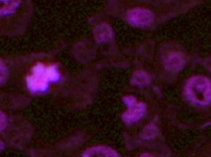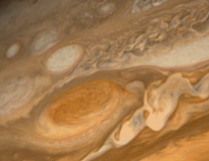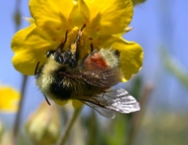SciStarter for Educators
Citizen science is public involvement in authentic scientific research.
One of the most important aspects of the SciStarter mission is to make it simple, accessible, and fun for people of all ages to jump in and get involved in real world science. A burgeoning initiative by SciStarter is to serve as a resource for learners and educators in both formal and informal learning environments.
When we engage in hands-on, authentic real world science, we make observations, begin to formulate questions, experiment, and ultimately construct deeper understanding about the natural world. Sometimes, it opens our eyes to how little we actually know about the world. The merits of engaging in citizen science abound, benefiting both participants and researchers.
As part of this exciting initiative, we’ve asked researchers at the UC Davis Center for Community and Citizen Science, to share suggestions and resources from their research on youth-focused community and citizen science (YCCS). With all the great potential for learning through citizen science, the researchers at the Center for CCS conducted case studies to find out when, and under what circumstances, this happens for youth.
"While working on citizen science projects,
students are not ‘playing’ science,
they are doing it."
-Nathaniel Bourne, AIG Specialist, Students Discover
The in-depth case studies of diverse YCCS projects were designed to examine environmental science agency - which is a person’s ability to use experiences in citizen science and environmental science to make positive change in one’s life and community. They found this deep and broad learning was associated with particular practices on the part of both youth and educators.
What works in youth-focused Community and Citizen Science?
Youth Key PracticesThe following practices were associated with youth acting on the world in personally meaningful ways, using the expertise and roles acquired through their YCCS experiences.
Youth take ownership of data quality (read more)
Youth share findings with outside audience (read more)
Youth engage in complex social ecological systems (read more) |
Educator Key PracticesWe have also identified key practices for educators, which can deepen learning in the context of YCCS.
Educators position youth as people who do science
Educators attend to the unexpected
Educators frame the work globally and locally
|
Youth Key Practices in Action
Our case studies illustrate what these key practices look like in action. They describe each project’s structure and how youth were involved, the products and scientific knowledge that youth generated, and the ways that youth engaged in the key practices.![]()
- Urban Creek: Teen Summer Program
- Aerial Mapping: Elective Science Course
- Sand Crab Monitoring: Museum Internship
- Bird Monitoring: 4th Grade Class
- School Garden: Elementary Classroom
- Milkweed & Monarch Monitoring: Summer Internship
- Tracking Sage Grouse: In the Field and Online
- BioBlitz: One-day Community Events
The SciStarter Project Finder is the perfect starting place for educators interested in integrating citizen science into curriculum - there are hundreds of projects suitable for all ages and many include teaching materials. You can target your search specifically to projects that encourage asking questions, defining problems, developing and using models, planning and carrying out investigations, analyzing and interpreting data, using mathematical and computational thinking, constructing explanations, or designing solutions. To go further, the UC Davis Center for Community and Citizen Science has developed a guide – with examples – for thinking through project selection when environmental science learning is an important goal.
Involving Youth in Community and Citizen Science (YCCS): Factors to ConsiderIn our research we have identified important design and implementation features of projects that should be considered when pursuing community and citizen science experiences for youth. We developed this tool as a way for you to explore those features, understand their implications for creating learning opportunities, and see examples of projects that include them in different ways. Click here to access the online tool and learn more about these guidelines.
|
At SciStarter, we’ve also been working to add lesson plan resources to featured projects. We're happy that our partnership with the National Science Teachers' Association (NSTA) allows us to connect projects to a robust community of educators. Starting with the September 2016 issue of NSTA’s Science Scope Journal, each Science Scope issue includes a SciStarter feature on Citizen Science in the Classroom. In addition, the NSTA Press publication, Citizen Science: 15 Lessons That Bring Biology to Life, grades 6-12 serves as a resource for educators interested in implementing citizen science in the classroom. The book presents citizen science lessons in the 5E instructional model format (Engage, Explore, Explain, Elaborate, and Evaluate). Additionally, Broward County School District STEM educators rated and reviewed hundreds of SciStarter projects and you can see their reviews on the "Educators Say" feature in the ratings and reviews on each project page.
Suggested Projects
Lost Ladybug Project - Common Core & NextGen standards met
Help scientists find and photograph ladybugs so they can try to prevent more native species from becoming so rare. Check out a case study by YCCS here: (PDF | web)

Help scientists learn more about butterflies and the environment by submitting butterfly count from 15 minutes of observation. Counting butterflies for just fifteen minutes could help scientists better understand the environment. The Big Butterfly Count is a recently started national survey that hopes to engage citizen scientists by creating easy and engaging survey methods. This is an easy, fun, and meaningful way to engage in science. Print out an identification poster, get outside, and start counting!
Help track population changes of five bee species. Take and submit photos of bees near you. This project requires a camera, the ability to send an e-mail with a photo attachment and patience. A GPS unit (or equivalent) would also be helpful.
Help learn more about dragonfly migration in North America. Report movements of 5 main migratory species. Become part of an international network of citizen scientists and help monitor the spring and fall movements of the 5 main migratory species in North America, or report on these species throughout the year at a pond or wetland of your choice.
Help scientists learn how urbanization affects spiders. Spot, record, and share sightings of spiders in Los Angeles. The project asks people to collect spiders in their homes and gardens, fill out a sample data sheet, and send or bring the spiders and forms to the National History Museum.
Help researchers learn about native and introduced species of ants by collecting samples and mailing them in! Teachers, students, parents, kids, junior-scientists, senior citizens and enthusiasts of all stripes are involved in collecting ants in schoolyards and backyards using a standardized protocol so that project coordinators can make detailed maps of the wildlife that lives just outside their doorsteps.
CoCoRaHS - Common Core & NextGen standards met
Provide weather data to meteorologists! Measure rain, hail, and snow. Each time a rain, hail, or snow storm occurs, students can help take measurements of precipitation from around them and submit the data online. Reports of 'zero' precipitation are encouraged too!

Accelerate cancer research to help find cures by classifying images of cancer cells. After a 10-minute tutorial, you can view images of cancer cells in an image carousel. Each image you will see is a tiny tumour sample from a huge dataset. Help scientists accelerate the analysis of this data by identifying the coloured sections of the image using our prompts, and bring forward the cures for cancers.

The Encyclopedia of Life is an online, collaborative project where you can learn about any species on Earth, as well as contribute information and submit photos. This global initiative seeks to create an "infinitely expandable" resource for all of our planet’s 1.9 million known species. Use as a resource in the classroom or for homework assignments.

Help scientists understand changing climates in your area. Make regular observations of your plants and submit data. Whether you have an afternoon, a few weeks, a season, or a whole year, you can make an important contribution to a better understanding of changing climates. Participating in Project BudBurst, a NEON citizen science program, is easy – everything needed to participate is on the web site. Choose a plant to monitor and share your observations with others online. Not sure where to start? Take a look at the Ten Most Wanted species.

Help scientists study long-term space travel by monitoring the growth of tomato seeds exposed to space conditions. Tomatosphere aims to inspire students by engaging them in real and meaningful science. Students are charged to monitor and record the germination rate for pre-treated tomato seeds in order to give researchers a better understanding of the long-term viability of growing tomatoes in space.

Create world map of the health of water bodies. World Water Monitoring Day is an international program that encourages citizen volunteers to monitor their local water bodies. An easy-to-use test kit enables everyone from children to adults to sample local water bodies for basic water quality parameters: temperature, acidity (pH), clarity (turbidity), and dissolved oxygen.
Project Noah - Common Core & NextGen standards met
Help scientists with ongoing research. Document nature with your mobile phone. Noah is a mobile phone app that students can use to document local wildlife and add their observations to a growing database for use by ongoing citizen-science projects.
Quake Catcher Network - Common Core & NextGen standards met
This project uses internet and sensors (subsidized or free for K-12 classrooms) to connect schools and other entities to an earthquake monitoring network. The idea of this project is to create earthquake and seismology awareness, as well as recording data though a “distributed computing network.” This means that your classroom’s computer will be linked to a network of other computers relaying information back to the central hub monitoring for earthquakes.
Be A Martian - Common Core & NextGen standards met
Help scientist improve maps of Mars and participate in other research tasks to help NASA manage the large amount of data from the Red Planet. Users create Martian profiles and become "citizens" of the planet. In the map room, citizens can then earn Martian credits by helping place satellite photos on Mars’s surface, counting craters, and even helping the rovers Spirit and Opportunity by tagging photos with descriptions.
Help scientists understand how we perceive sounds. Listen to recordings of laughter. Decide if they're real or not. The results will help scientists from University College London to understand the way we perceive and react to different sounds. The experiment should take about 10 minutes.

Help scientists measure, understand effects of light pollution. Use a free app to identify as many visible stars as possible. The more stars you observe, and the more often you run the app, the more precise the data for your location will become. As the seasons change so do the stars in the sky, and since there aren't so many very bright stars it is extremely helpful if urban users do measurements in each season.

Help scientists create accurate climate models by transcribing 19th-century weather logs from U.S. ships. Could be used in conjuction with a history lesson! These transcriptions will contribute to climate model projections and will improve our knowledge of past environmental conditions. Historians will use your work to track past ship movements and tell the stories of the people on board.

Test your own number sense and assess humans' math knowledge. Panamath is a free-standing software that can be used to assess number sense - your intuitive recognition of numbers and their relationship. Use Panamath to test your own number sense, read more about the research being done or download the software and adapt it for your own research or educational purposes.
NanoDoc is an online game that allows bioengineers and the general public to design new nanoparticle strategies towards the treatment of cancer. You’ll learn about nanomedicine and explore how nanovehicles can cooperate with each other and their environment to kill tumors.

Understand how proteins can fold incorrectly to cause disease. Install software on your computer that will perform calculations while your computer is idle. Help Stanford University scientists studying Alzheimer's, Huntington's, Parkinson's, and many cancers by simply running a piece of software on your computer.
This project is a unique blend of linguistics and psychology.Help scientists train computers to understand language by playing a variety of games that ask you about the meaning of words. Rather than try to work out the definition of a word all at once, we have broken the problem into a series of separate tasks. Each task has a fanciful backstory, but at its heart, each task is asking about a specific component of meaning that scientists suspect makes up one of the building blocks of meaning. You can participate for as little as a few minutes or come back to the site over and over to help code the many thousands of words in English.

The US Geological Survey (USGS) is recruiting volunteers to collect and update USGS geographic data. Similar to how other online crowdsourcing cartographic applications allow anyone to collect, edit, and use geographic data through an online map editor, the USGS has developed an online editor customized to our data needs that allows volunteers to contribute data to The National Map.

NASA's Radio JOVE project enables students and amateur scientists to observe natural radio emissions from Jupiter, the Sun, and our galaxy. Participants learn about radio astronomy first-hand by building their own radio telescope from an inexpensive kit and/or using remote radio telescopes through the Internet. They also collaborate with each other through interactions and sharing of data on the network.
Don’t see what you’re looking for?
-
SciStarter GLOBE Learning Center
Additional Educator Links for Citizen Science Exploration:
-
Citizen Science Toolkit for Educators from the California Academy of Sciences
-
Science Action Club from the California Academy of Sciences
-
BirdSleuth Citizen Science for Educators by the Cornell Lab of Ornithology
-
Education Working Group, Citizen Science Association
-
Project Budburst Educator Resources
-
The Crowd & The Cloud a 4 part citizen science public television series
-
ZooTeach from The Zooniverse
-
Educating as if Survival Matters an ariticle published in BioScience
If you have any questions or suggestions, e-mail us at info@scistarter.com.









Or Sign Up with…